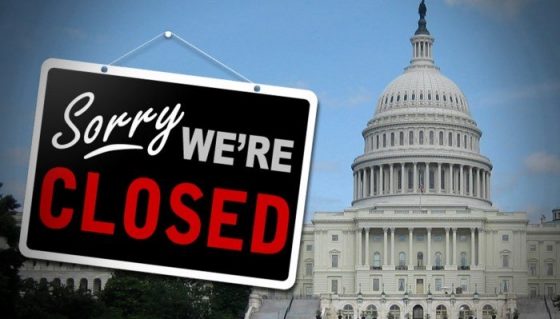I remember back in High School, one of my teachers told me that topics of discussion to stay away from in Social Settings were Religion and Politics… But with the current Political climate and the recent Government Shutdown, I felt it was a ne

Between 2018 and 2019, the US government faced two major shutdowns, both within President Donald Trump’s term in office. While the first focused on an argument between Democratic and Republican senators over the issue of immigration, the second focused on an argument between Democrats and both Trump and Republicans over border security and funding for a proposed new wall between the United States and Mexico.
The first shutdown began on January 20, 2018. The deadlock occurred following the results of Senate vote over the government’s upcoming budget, in which both parties argued over the issue of immigration – while the Democratic senators insisted upon funding of DACA to be addressed in the budget, Republicans refused to include it on the grounds that the deadline for discussing this and immigration was not until mid-March. A vote held on the proposed bill for the US budget failed to achieve the majority of 60 votes required for it to pass, after the majority of Democrats voted against it. The result of the vote triggered a deadlock between the two parties, with the shutdown occurring on January 20 at midnight.
Approximately 692,000 workers were furloughed as a direct result, over a period of three days, before a proposed stopgap measure to fund the government for four weeks was approved by the House of Representatives, reopening the US government on 23 January.[ In the aftermath of the event, there was a February 9 spending gap, but it did not lead to any workers being furloughed as it was resolved overnight.
The second shutdown began on December 22, 2018, and became the longest in US history on 12 January 2019 after surpassing the 21-day shutdown of 1995–1996. The deadlock occurred when Trump sought to include $5.7 billion in funding for a border wall as part of the US government’s spending budget,but faced objections from Democrats over questions on the effectiveness of the proposed wall and the amount required to fund it. A senate vote on the proposed spending bill failed to secure a majority vote to pass it through to Congress,with Trump unable to secure support for the bill by January 2019, knowing that when the Democrats took control of Congress that month following the mid-term elections in 2018, they would effectively block further attempts for funding.
Approximately 420,000 federal workers were required to work without pay, while the remainder were furloughed. The extended shutdown raised considerable financial uncertainty for federal workers, prompting some of those who had to work to call in sick and either find other paid work, or to protest against the shutdown,while concerns were raised over the consequences being brought forth, including sharp reductions in SNAP payments and delays towards completing tax refunds worth around $140 billion. Although Trump had two options by 4 January 2019 to end the deadlock – declare a national emergency to bypass Congressional approval for the new border wall, or prolong the shutdown to force Democrats to support funding for it both had issues if chosen: invoking a national emergency had the potential to face a legal battle from Democrats over the use of such executive powers, while prolonging the shutdown risked his administration facing mounting pressure and increasing the severity of the damage to the US economy.
The government shutdown is coming to a close — for now.
President Donald Trump announced his support for a bill to reopen parts of the federal government in a speech at the White House on Friday. The deal would fund affected agencies through February 15, a Democratic aide told INSIDER, and bring an end to the longest shutdown in US history.
Trump’s support clears the way for congressional leaders to quickly pass a short-term funding bill called a continuing resolution, setting up a high-stakes negotiating period to avoid another closure before a February 15 deadline.
It pains me to be going through this but fortunately, I am in a position where my family and I are not deeply affected.

But there are those I know who are and it is sad to see that these people who have worked hard for their country are at the crossroads of starvation, eviction and loss of hope.
I hope that soon and very soon this will all come to and end and we are not too bad off for the choices that people have made.
For those who are affected, I offer your my prayers.

